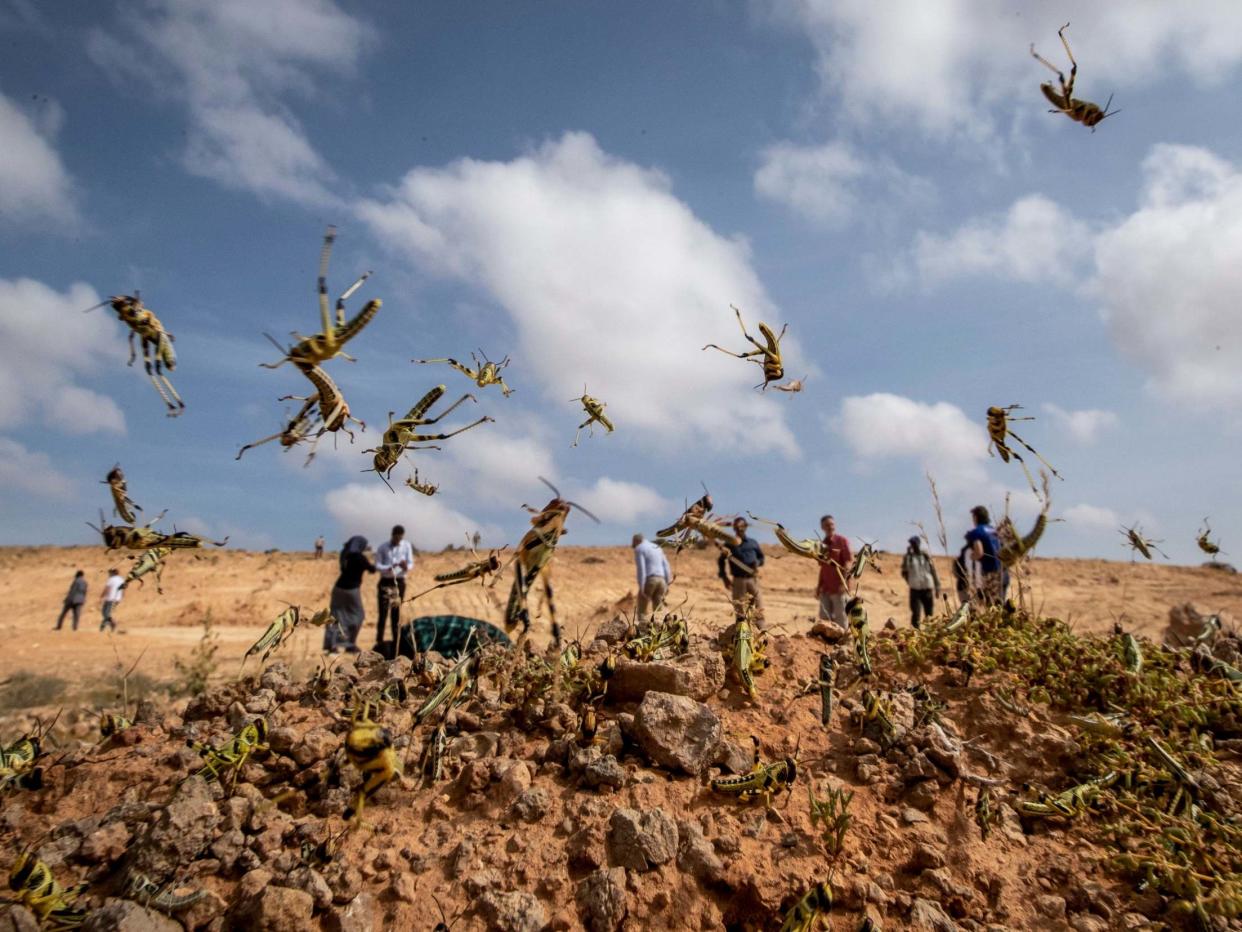Locust swarms cross into hunger-hit South Sudan

A gigantic locust outbreak has now reached South Sudan after ravaging crops and farmland across a swathe of eastern Africa, officials there have said.
The infestation has already put food security and people’s livelihoods at risk in Kenya, Somalia and Ethiopia in an “extremely alarming” series of swarms, the UN’s Food and Agriculture Organisation (FAO) said.
Further insectoid marauders had swept into Uganda and Tanzania, though to a “less worrisome” extent, it added in an update this week on what has become the biggest outbreak in several decades.
In addition, officials said “breeding is in progress along both sides of the Red Sea in Egypt, Sudan, Saudi Arabia and Eritrea where hopper groups, bands [and] immature adult groups have formed that [are] likely to cause swarms to form shortly”. They added: “Several immature swarms have moved from the coastal plains to the interior in Saudi Arabia and Yemen.”
Now, South Sudan’s agriculture minister Onyoti Adigo said some 2,000 desert locusts had been spotted in the country’s East Equatoria state, close to borders with three other affected countries.
About half the South Sudanese population faces hunger after years of civil war – more than 5 million people are classed as severely food insecure and some 860,000 children are malnourished. While the nation is oil-rich, parts were plunged into famine in 2017 and one-quarter of the population was forced to flee their homes due to war.
The sandy soil in the region allows locusts to lay eggs easily, according to Meshack Malo, the FAO’s country representative. At this stage, “if we are not able to deal with them ... it will be a problem”, he said.
Mr Malo added the locusts were a deep yellow colour, demonstrating they were mature and seeking spots to lay eggs. Eradication teams are planning to mark their nest sites and return in 14 days to kill the juvenile hatchlings, he said.
During each three-month breeding cycle, one locust can propagate 20 more.
The locusts have crossed the region in swarms the size of cities or even bigger. Experts say the only effective counter is aerial spraying of pesticides, but UN and local authorities have said more aircraft and chemicals are required.
A single swarm may contain 150 million individuals per square kilometre and travel 150km in a single day depending on the wind; one locust can eat its bodyweight in vegetation daily. One especially large swarm in northeastern Kenya measured 60km long by 40km wide, it was reported earlier this month.
The UN has said $76m (£59m) is needed immediately. On Tuesday, US secretary of state Mike Pompeo said while visiting Ethiopia that the US would donate another $8m to the effort, on top of $800,000 already pledged.
Locust numbers could multiply by up to 500 times by June, when drier weather begins, experts have said. Until then, the fear is that more rain in the coming weeks will bring fresh vegetation to feed a new generation of the voracious insects.
South Sudanese ministers called for a collective regional response to the outbreak.
Additional reporting by agencies
Read more
Somalis fight worst locust invasion in decades by eating them


